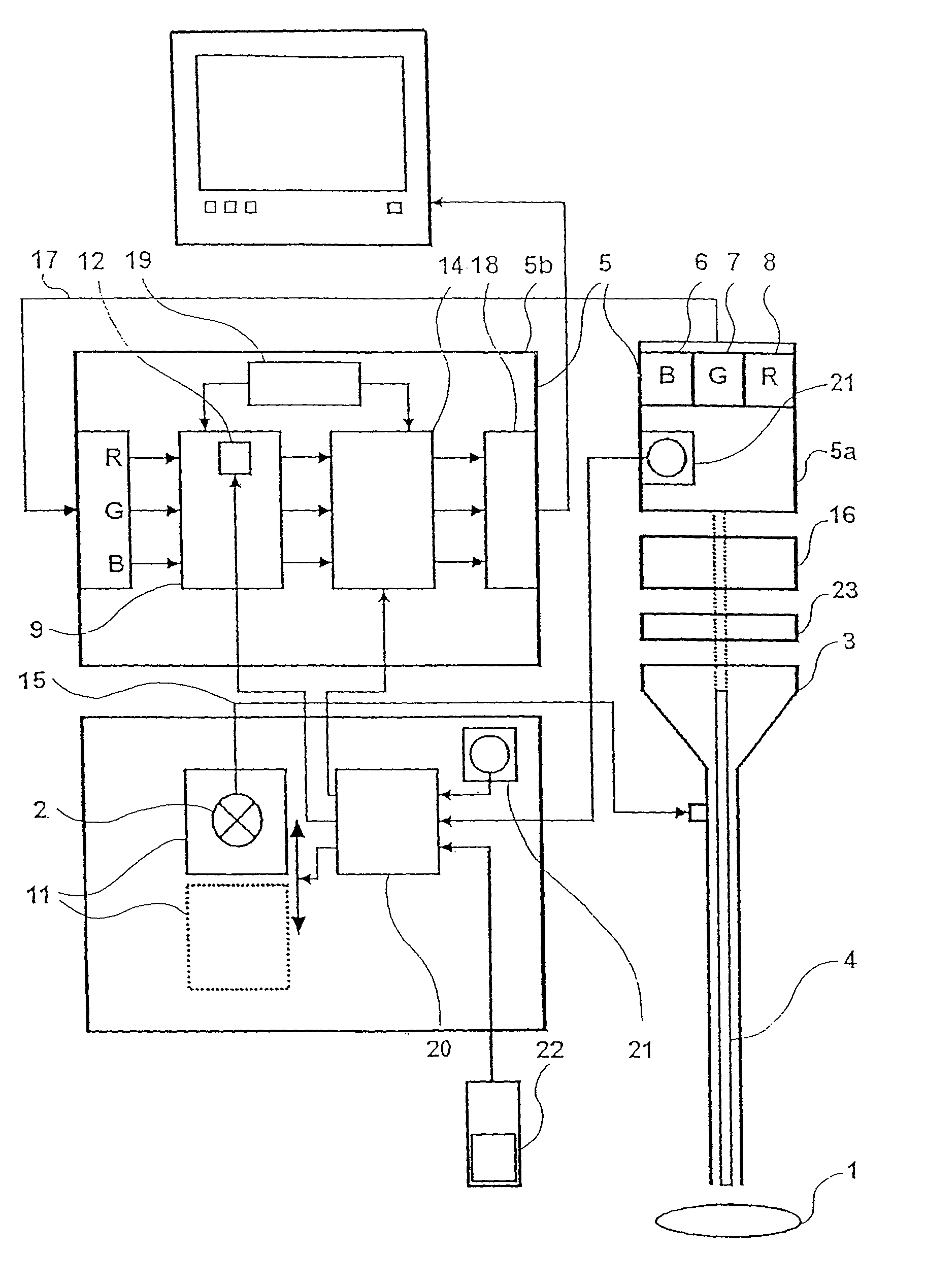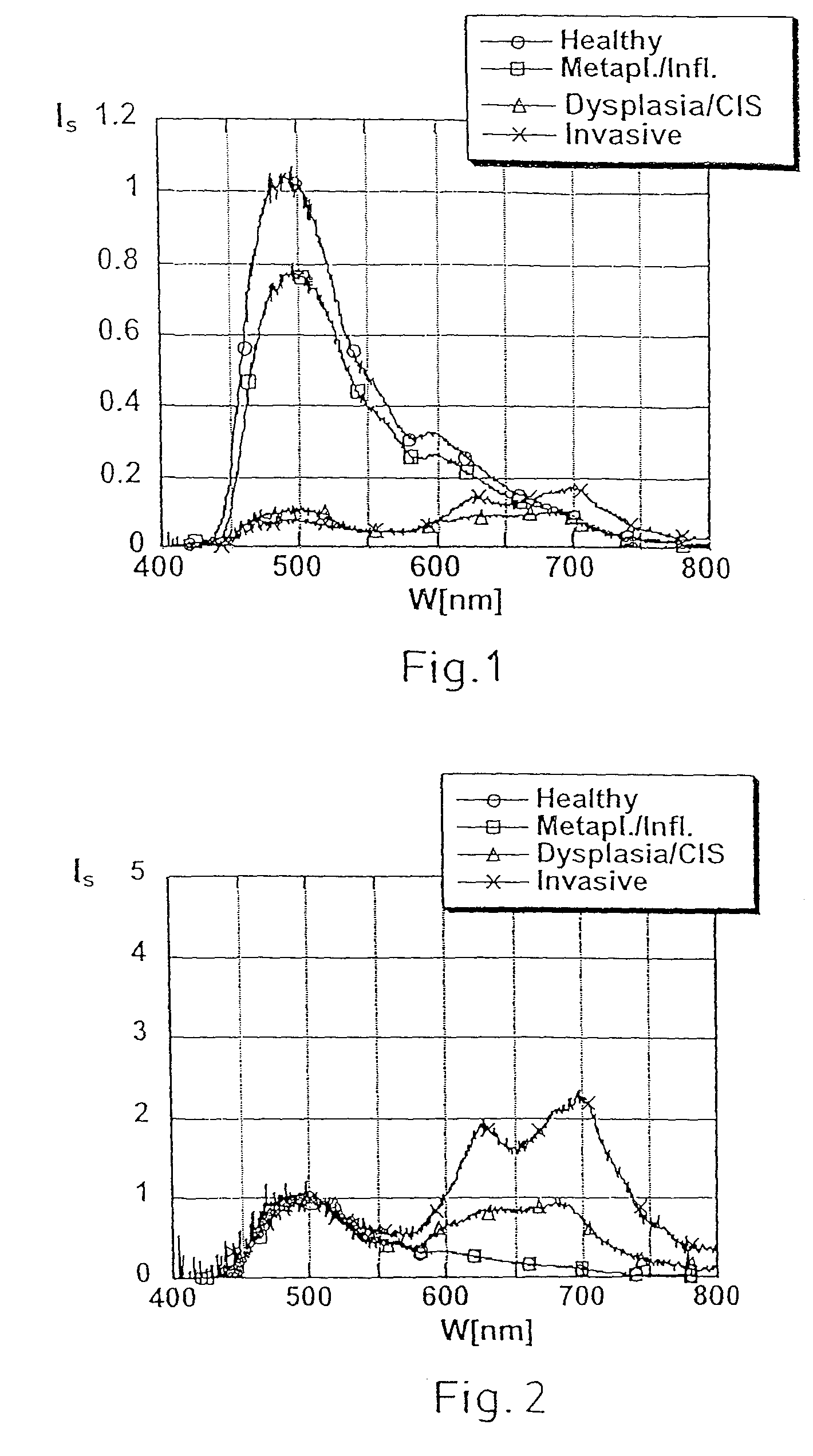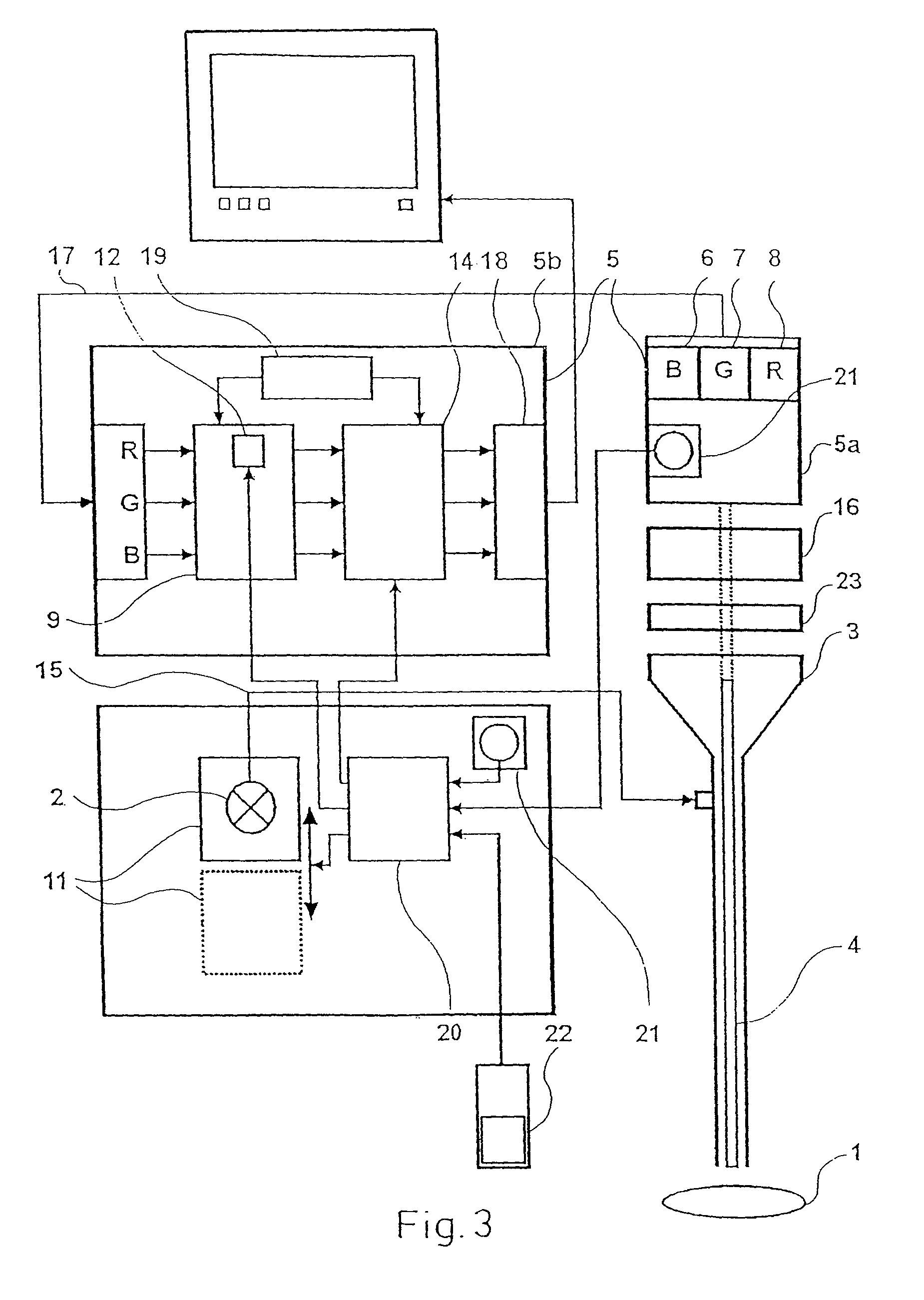Device for the picture-providing diagnosis of tissue using one of at least two diagnosis modes
a tissue diagnosis and tissue technology, applied in the field of tissue diagnosis devices, can solve the problems of insufficient exploitation of the given long time frame, small sensitivity of light endoscopy, and insufficient time frame for therapeutic purposes, so as to improve differentiation, improve sensitivity, and improve colour contrast
- Summary
- Abstract
- Description
- Claims
- Application Information
AI Technical Summary
Benefits of technology
Problems solved by technology
Method used
Image
Examples
Embodiment Construction
[0047]FIG. 3 shows a diagnosis device for the combined picture-providing white light diagnosis and picture-providing autofluorescence diagnosis of tissue 1. The device for examining the tissue 1 comprises a light source 2, wherein an incoherent, broad-band light source emitting in the visible spectral region is particularly suitable. The light source 2 emitting preferably white light may be a short arc lamp such as, for example, a xenon lamp a gas discharge lamp with mercury part shares or a mercury high pressure or even mercury highest pressure lamp. The latter have a broad irradiation base continuum in the visible and the line typical for mercury in the blue and violet. These partly ideally lie in the absorption spectrum for fluorescence excitation of the body-intrinsic fluorochrome relevant to the autofluorescence diagnosis. Alternatively a halogen lamp may be used.
[0048]All mentioned lamps have the advantage that on the one hand they have an irradiation part share in the violet / ...
PUM
| Property | Measurement | Unit |
|---|---|---|
| excitation wavelength | aaaaa | aaaaa |
| wavelengths | aaaaa | aaaaa |
| wavelengths | aaaaa | aaaaa |
Abstract
Description
Claims
Application Information
 Login to View More
Login to View More - R&D
- Intellectual Property
- Life Sciences
- Materials
- Tech Scout
- Unparalleled Data Quality
- Higher Quality Content
- 60% Fewer Hallucinations
Browse by: Latest US Patents, China's latest patents, Technical Efficacy Thesaurus, Application Domain, Technology Topic, Popular Technical Reports.
© 2025 PatSnap. All rights reserved.Legal|Privacy policy|Modern Slavery Act Transparency Statement|Sitemap|About US| Contact US: help@patsnap.com



